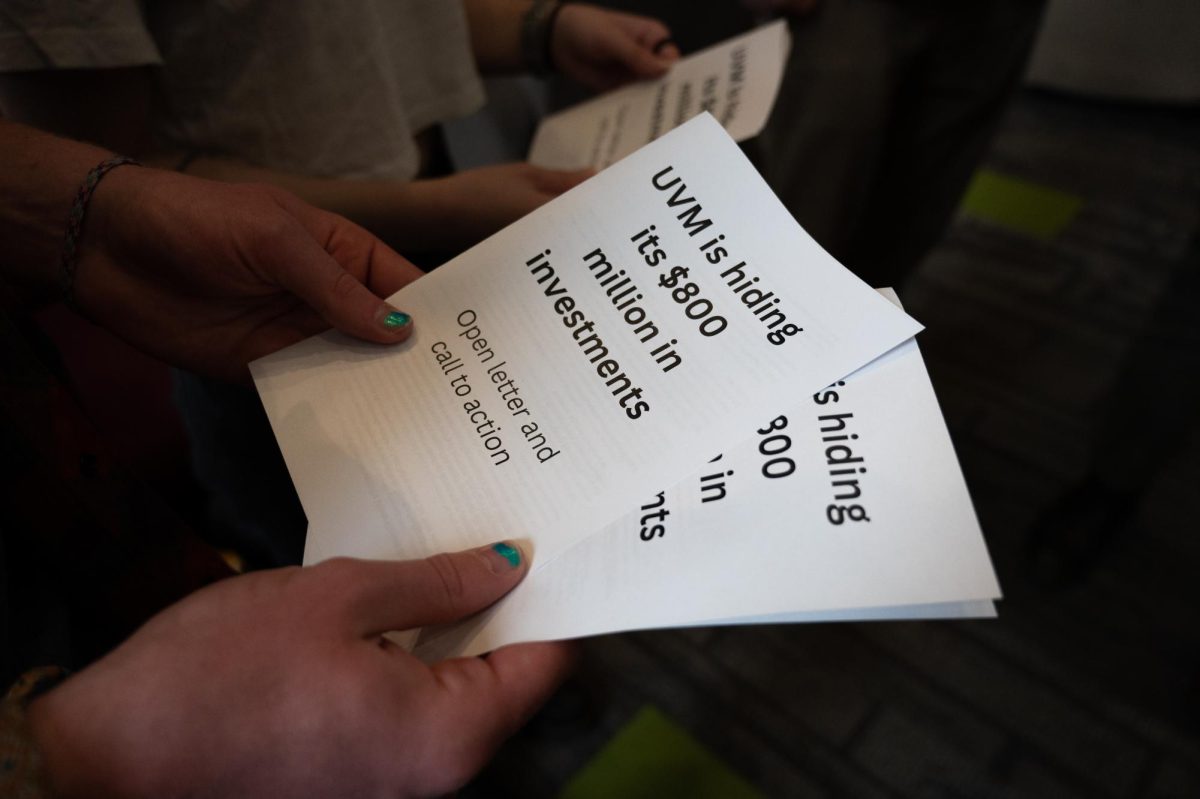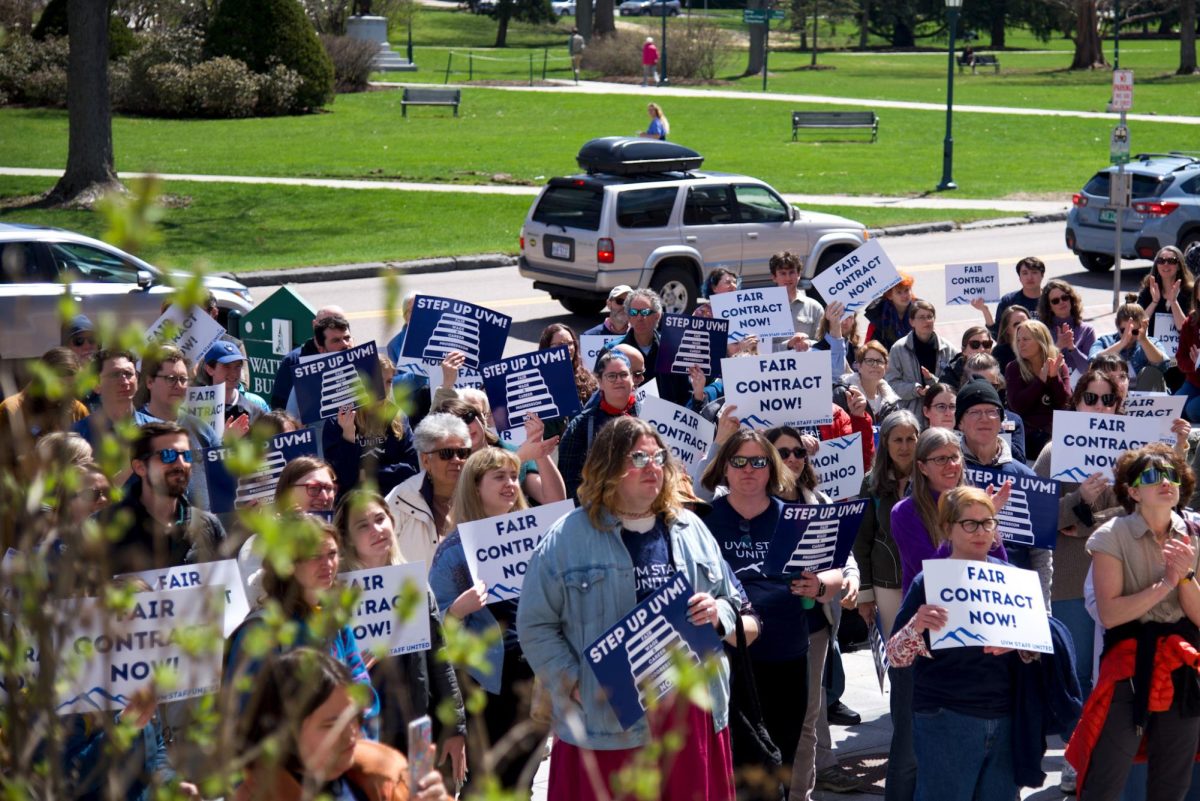The first black president has been sworn into office, the UVM diversity rate is increasing and it’s Black History Month. For some, these are reasons to celebrate. Others, however, feel as if this does not change anything.
BSU historian Melena Saddler said that her celebration of Black History Month is not affected by Obama’s inauguration.
“For me, black history has always been important,” Saddler said.
“Things like Obama make me feel like we are stepping up in society, but I wouldn’t base my enthusiasm on him even though it feels great to have our first black president.”
Coinciding with Obama’s rise to power is a belief among some that Vermont’s non-diverse stigma is shifting.
“Yes, Vermont is a very white state, but it’s changing and very open to racial diversity and inclusivity,” BSU Adviser Sarah Turner said. “Yeah it’s Vermont, but that doesn’t necessarily mean that there couldn’t be diversity here.”
“Burlington itself is more diverse than it was ten years ago. There are large groups of immigrants just in this local area,” she said. “It’s not just the UVM campus, but the whole community is changing a lot.”
Having a diverse population on campus is important to bring multiple perspectives into the classroom, Director of Admissions Beth Wiser said.
“The diversity of thought is so important in us being able to really be well educating our students,” Wiser said.
“In my opinion, the only way we can achieve that is to be able to have people who come and bring different perspectives and backgrounds. Oftentimes, stereotypes get broken down when there’s that personal experience. There’s real value in being able to have that on a campus.”
Wiser also said that Admissions is trying hard to raise the percentage of African Latino Asian Native American students accepted into UVM.
“It’s true, Vermont is not a very ethnically diverse state,” she said. “As a result of that, we have to be able to create an environment so that there’s a way to break down some of those barriers or stereotypes.”
“And it also requires us as an institution to be able to make sure that the infrastructure is here to be able to support students who are coming from backgrounds that are different than Vermont. Right now, the demographics aren’t necessarily in our favor, and I’m happy to kind of be a part of helping change that and shape it as best as we can,” Wiser said.
However, being a minority on a mainly white campus can be difficult, Saddler said.
“At first it bothered me a lot, and to some extent it still does,” she said. “When I came for orientation, I was the only minority of my group and, up until two weeks before school started,
I cried about it because I come from NewYork, where it’s highly diverse. I never fully interacted with white people before, so it was a little scary.”
Saddler, a sophomore, said she turned to BSU for support in her tough transition to UVM.
“I got involved with BSU my fall semester of freshman year and I liked the discussions and just felt like it was a good support system, being that the minority count on this campus is so low,” she said.
“I’ve made friends now, so I’m good and there is an advantage to being the minority, and I love that advantage because I have great people like those at the ALANA Center that look after me and help me with everything,” Saddler said. “I still wake up in the morning remembering I am a minority, but for the most part it doesn’t bother me anymore.”
UVM has recently implemented a requirement of six credits of diversity classes for each student at the University in order to graduate.
“I think it’s a great exposure for students,” Wiser said. “It really reinforces a fundamental value of UVM. Students [who] come to UVM are from very different places, and so being able to talk about that [diversity] and have a place for it in the curriculum is really valuable.”
Freshman Nariba Shepherd, a resident of the ALANA House in Living and Lerning and the future program director for the 2009-2010 academic year, said she does not agree with the requirement.
“People of color shouldn’t have to take diversity credits because the professors that teach them aren’t minorities and they sometimes use minor comments that are racial slurs without realizing it,” she said.
Turner said that students often forget that diversity does not only include race and ethnicity, but gender, sexual orientation and disability as well.
“The school is making a very big effort, and the courses are very inclusive,” she said. “I think it’s very well worth it. Making the courses required does make it sound problematic, but I think it’s a good part of general education.”
Amani Whitfield, professor and Interim Director of ALANA U.S. Ethnic Studies courses, said he thinks there needs to be more communication and awareness cross-culturally.
“We live in a diverse world,” he said. “Diversity means all different sorts of people, including white people, so I think it’s best that we have a good cross-racial understanding that’s not based on blaming one another.”
“I think students could continue to integrate themselves a little bit more in terms of who their friends are and who they hang out with, or better yet, just where they sit in class,” he said.
Turner agrees that there needs to be more awareness on campus.
“There’s a lot going on here beyond the six credit diversity requirement,” she said. “Part of the problem is that no one knows what’s going on. A lot of people think, ‘Oh, that’s for the black students.’ They aren’t just for the black students, but there’s a sense of, ‘Oh, that’s the Black Student Union,’ and they’re much more inclusive than that. There should be more awareness of all of these events on campus.”
Saddler said she finds being a part of BSU to be a great experience.
“BSU is just another race and culture affiliated student organization that welcomes all races and backgrounds to come out and learn about black culture, while listening to their opinions,” she said.
















